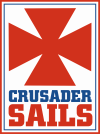Bias
A diagonal across a piece of fabric at 45 degrees to the warp and fill
Count
The count of a piece of fabric is indicated first by the number of warp threads per inch, then the number of filling picks per inch
Creep
The property of fibres to gradually stretch under a constant load
Crimp
Length or waviness added to a yarn when it is woven over-and-under in a piece of fabric. Crimp can contribute to the elongation of a fabric under load
Dacron
DuPont’s trade name for polyester fibre
Denier
A system for coding filament yarns and fibres, with low numbers representing finer sizes and higher numbers representing heavier yarns
Elongation
The difference between the length of a stretched sample and its initial length, expressed in 1/100ths of an inch
End
An individual warp yarn
Fatigue
The weakening or loss of stretch resistance of a fabric due to flutter or impact testing
Fill
The yarn or fibre running across the width of the fabric at right angles to the warp
Flutter test
Simulates the wear and tear a fabric will experience in a sail; a sample is spun on a windmill for 30 minutes
Greige
Woven fabrics in unfinished state
Hand
Softness or firmness of a fabric
Impact test
Similar to the flutter test except that the sample beats for 15 minutes against an obstacle placed at right angles to the windmill
Isotropic
Equally stretch-resistant in all direction, which is one of the advantages of Mylar for sailcloth use
Kevlar
DuPont’s trade name for a family of high-strength aramid fibres
Laminate
A layered fabric made by bonding a substrate to one or two plies of Mylar film
Load
The number of pounds exerted on a 2” x 16” test sample. A Load-Deformation Curve expresses the relationship between the change in dimension of the sample (in 1/100ths of an inch) as a result of an external load. It is usually expressed as a graph
Modulus
The measure of stretch or elasticity of a fabric. High modulus = Low stretch
1% elongation
The load required to stretch a fabric sample by 1% of its original length; commonly used to indicate the high-load stretch resistance of Dacrons and Mylar/Dacron laminates
Pick
An individual filling yarn
Polyester
A Polymer of terephthalic acid and ethylene-glycol spun and drawn to produce a strong, tough, abrasion-resistant fibre
Primary yarn direction
The orientation (warp or fill) in which a fabric is the most stretch resistant
Recovery
The ability of a yarn or fibre to return to its original length after it has been stretched
Sailmakers weight
Weight of a 35” x 28.5” sample
Secondary yarn direction
The orientation (warp or fill) 90 degrees to the primary yarn direction
Selvage
The edge of a piece of fabric
Spectra
A highly modified polyethylene fibre developed by the Allied Corp. with a stretch resistance similar to Kevlar
Substrate
A fabric that is bonded to a Mylar film
Tenacity
The breaking strength of a yarn of fabric stated in force per unit of the cross-sectional area
Tensile strength
The ability of a fibre, yarn or fabric to resist breaking under tension
Warp
The yarn or fibre running the length of a fabric
